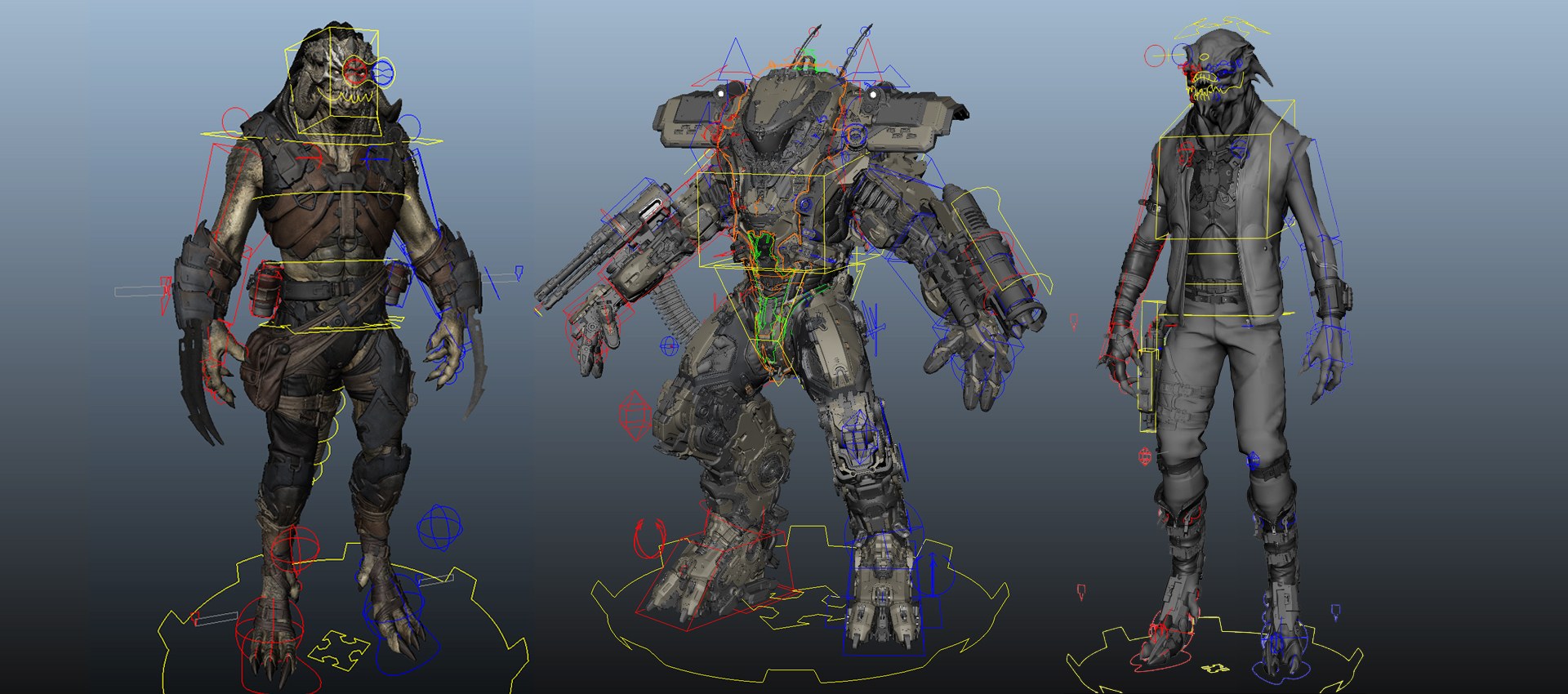
Short answer: A rigger builds the digital skeletons, controls, and deformation systems that allow 3D characters and creatures to move and be animated.
Who is NOT a Rigger?
- A person who only sculpts characters in 3D (that’s a Character Artist) is not a Rigger.
- A person who only creates animations (that’s an Animator) is not a Rigger.
- A person who only designs concepts (that’s a Concept Artist) is not a Rigger.
- A person who only manages pipelines (that’s a Technical Artist) is not a Rigger.
What does a Rigger do?
- Skeleton creation: build digital bones for characters, creatures, and props.
- Skinning: bind 3D models to skeletons for natural deformation.
- Control rigs: create user-friendly controllers for animators.
- Facial rigs: set up blendshapes, joints, and controls for expressions.
- Mechanical rigs: vehicles, weapons, and dynamic props.
- Tools & scripts: develop custom rigging tools to speed up workflows.
- Collaboration: work closely with character artists, animators, and technical directors.
Why it matters
Without riggers, animators can’t bring characters to life. A good rig ensures smooth, believable movement and makes the animator’s job efficient and expressive.
Common misconceptions
- “Riggers just add bones.” → They design complex control systems for usability and realism.
- “Any rig works the same.” → Bad rigs create stiff, broken, or unnatural animation.
- “It’s only about characters.” → Riggers also handle creatures, vehicles, and even props.
Core skills & tools
- 3D software: Maya, Blender, 3ds Max.
- Scripting languages: Python, MEL, C#.
- Deformation systems: blendshapes, corrective shapes, skin clusters.
- Facial rigging techniques.
- Strong understanding of anatomy and mechanics.
Practical frameworks
- FK vs. IK systems: forward vs. inverse kinematics.
- Hybrid rigs: combining FK/IK for flexibility.
- Modularity: reusable rigs for multiple characters.
- Performance optimization: lightweight rigs for gameplay, complex rigs for cinematics.
Portfolio tips
- Show rig demos: sliders, controllers, deformation tests.
- Include before/after skinning comparisons.
- Add facial rigs and complex setups (like wings, tails, vehicles).
- Demonstrate tools/scripts created to speed up rigging.
Quick example
Think of Spider-Man’s web-swinging rigs: IK/FK blending for fluid motion.
Or Horizon Zero Dawn creatures: complex rigs with mechanical + organic parts.
Author: Pouria Mojdeh
References:
- Jason Osipa – Stop Staring: Facial Modeling and Animation Done Right (Wiley, 2010)
- Eric Allen, Kelly L. Murdock – Body Language: Advanced 3D Character Rigging (Sybex, 2008)
- Brad Clark – Rigging for Games (workshops, CGSociety, online)
- Autodesk – Maya Rigging Documentation (official resources)
- Game Developer (formerly Gamasutra) – www.gamedeveloper.com
